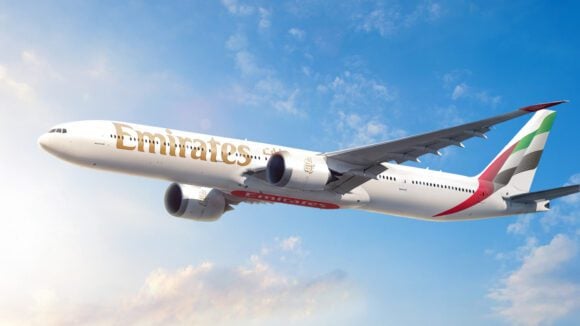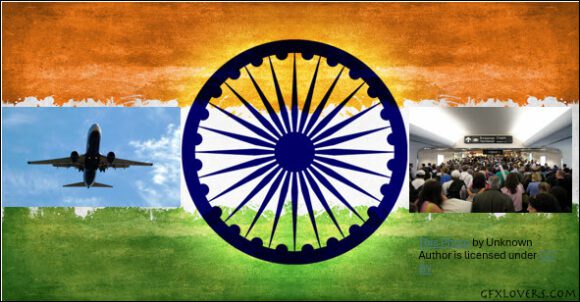In a previous story we wrote about the growing demand for pilots. The demand is real and well documented. But what about the other side of the equation? Where will these pilots come from?
In its recently released study, Boeing notes a demand for 617,000 airline pilots by 2035. They go on to say: “Meeting this demand will require innovative solutions — focused on educational outreach and career pipeline programs — to inspire the next generation of pilots, technicians, and cabin crew. New technologies, devices, and training methods will be needed to meet a wide range of learning styles. The growing diversity of aviation personnel will also require instructors to have cross-cultural and cross-generational skills to engage tomorrow’s workforce.” Airbus forecasts a need for 560,000 pilots by 2035. The demand for pilots is not exclusively a commercial issue. Even the USAF is worried about a shortage.
To produce that number of commercial pilots is a massive undertaking. The cost of this undertaking is even more alarming.
Commercial pilots require a license. There are essentially two primary types of licensing authorities the industry turns to: FAA and EASA. The FAA’s requirements come down to this: “The rule requires first officers — also known as co-pilots — to hold an Airline Transport Pilot (ATP) certificate, requiring 1,500 hours total time as a pilot. Previously, first officers were required to have only a commercial pilot certificate, which requires 250 hours of flight time.”
Is there any wonder why the industry has been so vehement in its response to the FAA rule?
Now consider that the supply of 617,000 commercial pilots. About one-third of global demand is expected to be US-based. Assuming about 204,000 need to get 1,500 hours at $270,000 per student, minimum. The cost could be prohibitive. Bear in mind that today, worldwide, there are an estimated 200,000 active pilots flying passenger aircraft. The demand appears to require more than a tripling of the supply of pilots.
Commercial pilots are produced by flight schools. These can be roughly divided into three types: regular flight schools, university programs and professional flight academies. The FAA even has an online list of approved flight schools. The FAA also offers this very important piece of advice: “Do not make the mistake of making your determination based on financial concerns alone. The quality of training you receive is very important.”
The decision to become a professional pilot is not unlike the decision to enter any profession. It must be taken seriously and numerous factors play a role in the selection of an education source. We have created the following table that tries to lay out some of the obvious trade-offs.
Whereas the cost of training at a flight school is lowest, it also has the highest risk for a person wanting to get a job flying for an airline. Remember the FAA advice. That is not to impugn any flight school. To put in another way: if you get your law school training at a typical law school your expectations are going to be quite different than if you got your training at an Ivy League law school. Moreover, the training in the table does not get you to 1,500 hours – that is extra.
Funding the training is clearly the most significant hurdle. In simple terms, a person considering the professional pilot career has to realize the poor ROI. After completing training and accumulating the hours, the investment cannot be paid off at going salary rates.
If we use Boeing’s 2035 forecast for 617,000 pilots as a benchmark, consider the following. The pilot training industry is capable of generating about 5,000 commercial pilots per year. At that rate, the average demand for about 31,000 pilots will clearly not be achieved. Something radical is going to have to occur to supply to meet demand, and a five-fold increase in worldwide training capacity will be required.
The situation facing the industry demand for pilots is one way quite simple. The standards for commercial pilots are established. But international standards are lower than FAA standards, so it isn’t all the same. Non FAA pilots can fly commercial flights into the United States with 250 hours.
The solution to the yawning gap has to be a combination of the following:
- Airlines need to provide a path for people wanting to become professional pilots. This path needs to include the education cost and a salary. Leading airlines like Lufthansa do this now. But Lufthansa may be creating more new pilots than it needs. Can Lufthansa run their program as a revenue center by offering trained pilots to other airlines?
- SOP – a Lufthansa trained pilot will have been trained to think and behave like a Lufthansa pilot. There will almost certainly be some additional training for a Lufthansa trained pilot to fly for another airline. Every airline has their own SOP.
- Salaries – Airlines are going to have to increase pilot salaries by a significant amount to attract people. This is a cornerstone issue. Without this, no person can afford to enter the profession. The investment required has to be covered somehow.
- Airlines, on the whole, have been notoriously cheap and don’t like paying for training. This has to change. Moreover, airlines often don’t have the resources to undertake training and turn to the academies who offer the quality they need and the fastest training time.
- For people who take the path of acquiring their own education, the choices are going to be financially driven. Based on our simple table, it would seem the University path offers the lowest risk.
- But this path also means a likely lower salary from a secondary airline. That brings back more career risk.
- Moreover, the process takes four years which carries an opportunity cost of three years without an income as a pilot. Had the student enrolled in an academy, the cost would be higher but only use one year.
- The cost of going to an “Ivy League” academy is highest. But is also offers about 80% chance of an airline job. Moreover, the best airlines are going to pick from these sources first. The financial cost is highest, but the professional risk is lowest. Given the inherent risk of working for an airline, this option may be the cheapest in the end. The risks working for airlines are bankruptcy, losing a job from retrenching or losing seniority from a takeover.
- Finally, there is the situation among the educators. They may be sitting on a potential gold mine of a business. The biggest provider is Canada’s CAE, which not only delivers 1,000 pilots every year, it even has 1,000 pilots on its own roster that it hires out to airlines. Is it any surprise that another academy, FlightSafety, is owned by Berkshire Hathaway?
- Can the educators provide a better career path and financial flexibility? The educators like Universities and Academies have the resources to expand. These institutions are going to be the places that will do more to close the gap between demand and supply than anywhere else.
- What kind of financial support can be brought into the profession? Is there an opportunity here for an outside party?
Views: 19





There needs to be some kind of mass media campaign to attract young people to the aviation industry. The salary expectations are initially somewhat low, but with experience and growth, future earnings will be attractive. Job growth and great earning potential are fantastic given the old supply and demand criteria.
http://www.youtube.com/watch?v=e8wBJ0P9IWc